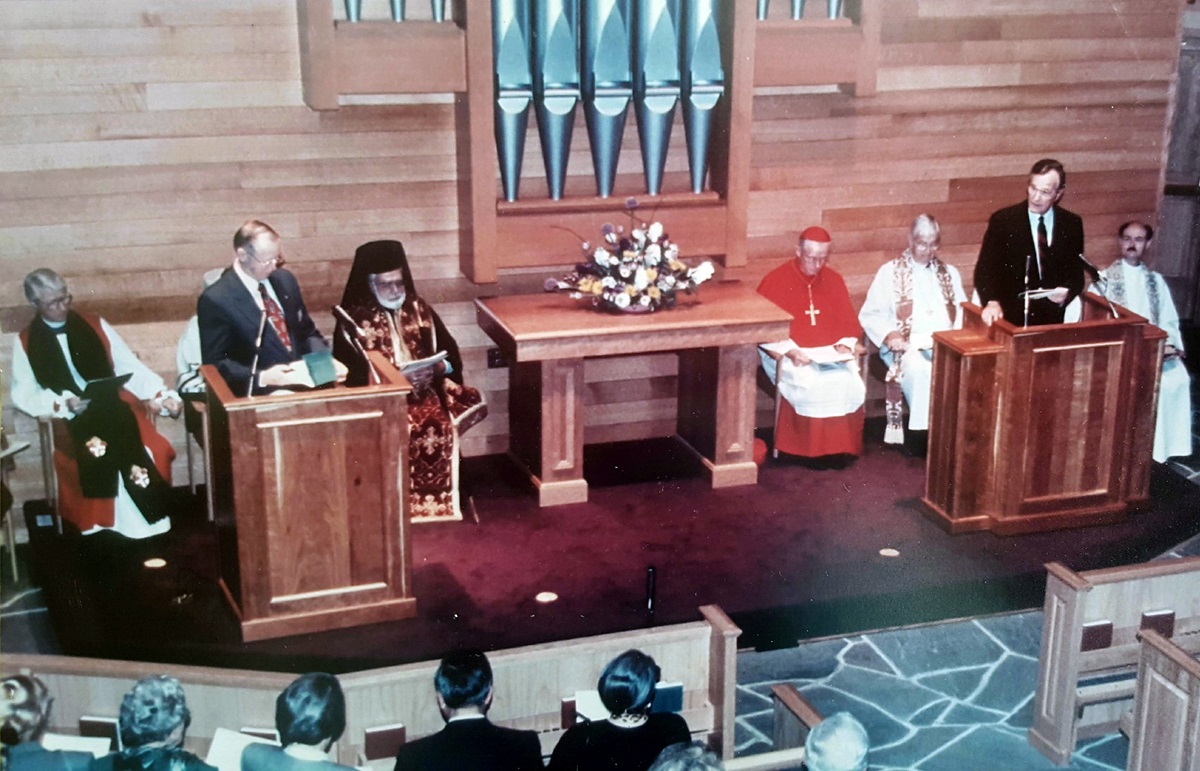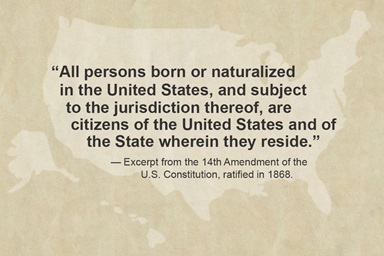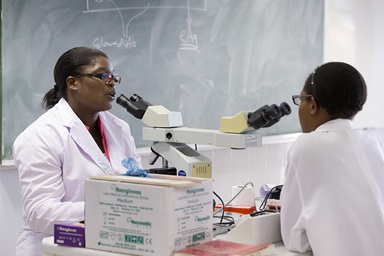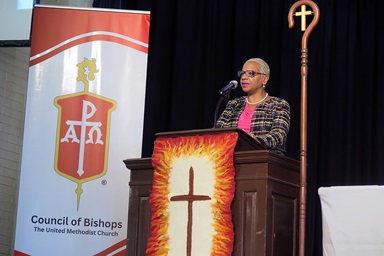The Rev. Laurence Hull Stookey — pastor, professor and prolific writer — helped change how United Methodists and other Protestants worship.
Churchgoers can experience his influence in their celebration of the Christian year and their practice of the sacraments, especially baptism. He also wrote the book on public prayer “Let the Whole Church Say Amen!” still used in seminaries today.
In addition, he made his mark on the national stage, writing the liturgy for and participating in the 1991 dedication of Camp David’s Evergreen Chapel under President George H.W. Bush.
Stookey died Oct. 16 at Asbury United Methodist Village in Gaithersburg, Maryland, after a long illness with Lewy Body Dementia. He was 79.
If you have attended a baptism in a United Methodist church recently, you have likely heard Stookey’s words.
The Rev. Taylor Burton-Edwards, Discipleship Ministries’ director of worship resources, said Stookey was the primary developer of how United Methodists celebrate baptism. Stookey emphasized the baptismal vows are “a response to what God is doing in our lives.”
“He helped a lot of us — United Methodists chiefly, but other Protestants as well — claim a strong sacramental understanding and see what God is doing, and what God’s doing is pretty profound,” Burton-Edwards said.
THE REV. Laurence Hull Stookey
Wesley Theological Seminary in Washington will celebrate Stookey as part of its All Saints Day service at 11 a.m. EDT Nov. 1 in Oxnam Chapel.
A memorial service is set for 11 a.m. EDT Nov. 4 at Metropolitan Memorial United Methodist Church in Washington.
Donations in Larry Stookey’s memory may be made to the Lewy Body Dementia Association, 912 Killian Hill Road, S.W., Lilburn, Georgia 30047, or the Michael J. Fox Foundation for Parkinson’s Research, P.O. Box 4777, New York, NY 10163-4777.
The rite stuff
Stookey taught thousands of students about love of God over the years. From 1973 to 2007, he was the Hugh Latimer Elderdice Professor of preaching and worship at United Methodist Wesley Theological Seminary in Washington. He also taught at theological schools in Korea and New Zealand.
The Rev. Lucy Lind Hogan, who earned her Doctor of Ministry under Stookey and succeeded him as Elderice Professor, said her mentor was devoted to The United Methodist Church, to Wesley Seminary and to John Wesley.
“He recognized the importance of traditional liturgy, and he wanted students and pastors to remember their tradition, their heritage and the importance of sacramental liturgy in growing and shaping disciples of Christ,” she said.
Stookey was among the four most influential liturgical scholars of The United Methodist Church, said the Rev. Brian K. Milford, president and publisher of the United Methodist Publishing House.
The other three were the Rev. Hoyt Hickman, who passed away in September; the Rev. James White, who died in 2004; and the Rev. Don Saliers, who remains theologian-in-residence at the Candler School of Theology.
The scholars were part of the growing emphasis on ecumenism that had begun in the late 19th century with the rediscovery of some early church texts and really took off with the Catholic reforms of the Second Vatican Council. Many Catholics and Protestants found they had more in common than previously thought.
Stookey and his three fellow scholars “worked closely together after Vatican II to reform Protestant worship, including an emphasis on the Revised Common Lectionary, which was eventually adopted by more than 20 denominations,” Milford said.
The four also collaborated in producing the 1992 United Methodist Book of Worship and the Handbook of the Christian Year.
“He was one of the most steady, faithful, articulate people I ever worked with,” Saliers said of his old friend. “I’ll miss him personally, but I think all of his former students would shout out that he was one of their great mentors and teachers.”
Saliers said Stookey’s writings on communion, baptism and the church year constitute enduringly valuable resources for The United Methodist Church.
He also credited Stookey, who came out of the Evangelical United Brethren tradition, with helping United Methodist worship reflect the “United” part of the denomination’s roots.
Influence on students
Stookey was born April 8, 1937, in New Athens, Illinois, and eventually attended Swarthmore College, Wesley Theological Seminary and Princeton Theological Seminary, where he earned his Ph.D. in theology. He also was a gifted musician who played multiple instruments.
In addition to teaching and making music, Stookey was a pastor at multiple churches.
While a Wesley faculty member, Stookey regularly drove to surrounding states on the weekend to speak in churches, many of them small, said former student the Rev. Mark Stamm.
After retiring from Wesley, Stookey took an appointment at Asbury United Methodist Church in Allen, Maryland.
“He never forgot his vocation to the local church,” said Stamm, who is now a professor of Christian worship at Southern Methodist University’s Perkins School of Theology in Dallas.
“He always believed that he had an important teaching mission. I’ve tried to remember that in my own work, and he definitely was an example to me.”
A number of former students say they still see Stookey’s influence in their ministry.
The Rev. Charles Parker, senior pastor of Metropolitan Memorial United Methodist Church in Washington, had Stookey as an adviser on his doctoral work. “He was a man who brought enormous cheerfulness to how we craft worship and a very, very high sense on how that reflects on the honor we want to give God,” Parker said.
The Rev. Rob Apgar-Taylor, a former student and United Church of Christ pastor, regards Stookey “like a father.” The friendship began when, after only two weeks of class, Apgar-Taylor learned that his aunt had died suddenly.
The professor generously offered to lend his student a car to get back for the funeral. Apgar-Taylor found another way home, but he knew he had found a mentor.
“He taught me to love the ritual and history of the church in a way I didn’t understand or love before,” Apgar-Taylor said.
Apgar-Taylor and others say Stookey’s work gave them an appreciation of how the shifting church seasons can help people connect with God.
Sondra Wheeler, Martha Ashby Carr Professor of Christian Ethics at Wesley, noted that it is appropriate Stookey joined the church triumphant close to the start of Advent.
“It makes me glad to think he will be all settled in Heaven in time for the start of the new liturgical year.”
Stookey is survived by two daughters, Laura (Stookey) Money and Sarah Stookey, and six grandchildren. He is also survived by his ex-wife and friend Peggy Reynolds.
Hahn and Hodges are news reporters for United Methodist News Service. Contact them at (615) 742-5470 or newsdesk@umcom.org.
Like what you're reading? Support the ministry of UM News! Your support ensures the latest denominational news, dynamic stories and informative articles will continue to connect our global community. Make a tax-deductible donation at ResourceUMC.org/GiveUMCom.





